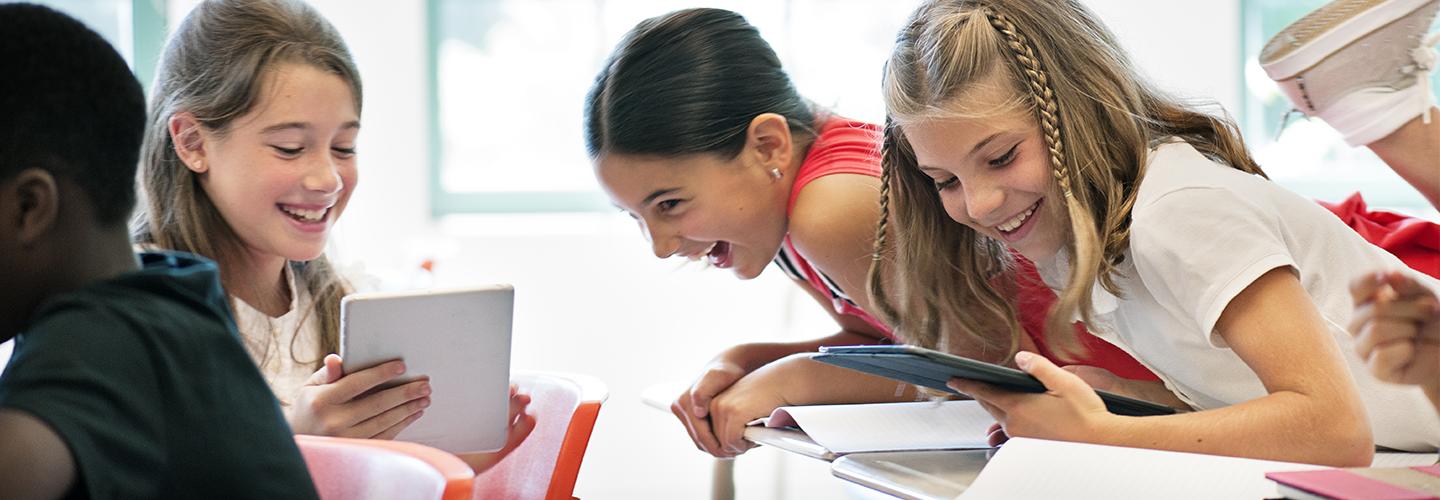The World Wide Web provides great opportunities for the development of education: distance learning, access to a large amount of information.
As with any other phenomenon, the development of technology has both positive and negative effects on education and student performance. Experts from Pro-Papers tried to figure out all the nuances of the influence of technology on education.
Impact on teens
From one year to the next, the number of teenagers who spend more time on the web is increasing. According to research in 2016, more than 98% of children aged 12 to 17 years spend time on the Internet almost every day, regardless of the time of day and location (Wi-Fi point). Compared to 2013, the number of children using the Internet in vocational education and out of school has increased significantly.
According to statistics, in 2013 every fourth child spent his/her time on the Internet for more than three hours, in 2016 this number increased to every third child. Obviously, the impact of the Internet on adolescents is contagious and avalanche-like. Statistics show that teenagers spend most of their time on the Web, and this is of primary importance to them – where they learn, play and communicate with their peers. In addition, Internet technologies in learning have become a new way of life for children: so, they can get maximum information and communication, therefore measures to prevent the harmful effects of the Internet should be reasonable.
To begin, consider what changes occur in higher mental functions when you are on the web.
Memory: students using search engines (Google, Yandex) remember not the content of information on the page, but the place where the source is located. So, the development of memory stops, because a person knows where the information is, and can always find it.
Attention: due to the huge flow of information (text, video, games), the student’s attention is scattered. At the same time, the influence of the Internet in vocational education on a teenager is quite favorable (the study of one subject).
Perception: students spending time on the computer gradually stop receiving sensory signals from the outside world. They dull the feelings, the perception of smells, sounds, there are phobias of touch.
But,
Information technologies have introduced new tools and ways of learning into the educational space. First of all, it concerns distance education, which, having a number of advantages in comparison with other forms, is becoming increasingly popular today. The difference between distance education and other forms of education is that it provides an individual lesson plan. Each “distant” student is supervised by a specific teacher. He/she gives student advice in case of difficulties, checks tests and work helps prepare for exams. Communication between student and teacher is carried out via the Internet.
A student receives the teaching materials not in the form of ordinary textbooks, but in electronic form. In addition, a student can choose the sequence of study of disciplines and the speed of work. For example, if a course in a regular higher education institution is extended for a whole year, then with distance education there is an opportunity to complete everything in one semester or, on the contrary, stretch the education for several years. You should not think that the distance assumed by this type of training leads to the fact that the student learns too late. Students can’t skive in case of such learning. After all, the system is kept in tight control and reporting. For each course studied, a student must report to his/her teacher by passing tests, tests, etc. Until they are handed over, the training does not move on.
New technologies are changing the skills required for educated people. Previously, education meant primarily erudition – the ability to identify. For example, when looking at a building, you should say when and by whom it was built. Now it is equally important to be able to use technologies that allow you to find this information, and the sooner the better.
Moreover, e-services for education can help both students and teachers. “Thus, according to the latest research data, the use of electronic services has allowed an increase of student performance by 10–15%,” confirms our thought Thomas Litt, the Pro-Papers expert. According to him, with the help of e-services for education, teachers know information about students, see statistics and performance trends, which positively affects the quality of education. Also, thanks to the use of online diaries and journals, teachers are easier to create statistical and departmental reports, while saving time. In addition, such electronic platforms solve the long-standing problem of the deputy head teachers – drawing up a training schedule. “Usually, this process took 1-2 weeks, and using such a service, a 90-95% ready schedule can be obtained in a couple of hours. Moreover, the schedule will already take into account all the requirements”, says Thomas Litt.
In addition, the Internet provides tremendous opportunities for education. Thus, students living in areas of the world where education at the proper level of modern society is absent are able to have access to information resources and knowledge, which previously could only be dreamed of. Technology creates new opportunities for intellectual collaboration and cognitive learning. The Internet serves as a unique and effective means of disseminating complex ideas and abstract concepts. Thanks to the Internet, today’s students are not limited by spatial and temporal frameworks. Currently, there are about 600 million students in the world, 30 million of whom are enrolled in distance education.
Thus, only with the advent of modern Internet technologies, it became possible to study at a completely new qualitative level. All this, as statistics show, significantly increases student performance and attractiveness of learning as such. Despite possible negative sides technology in education has a progressive and positive impact on youth development.



Share your thoughts